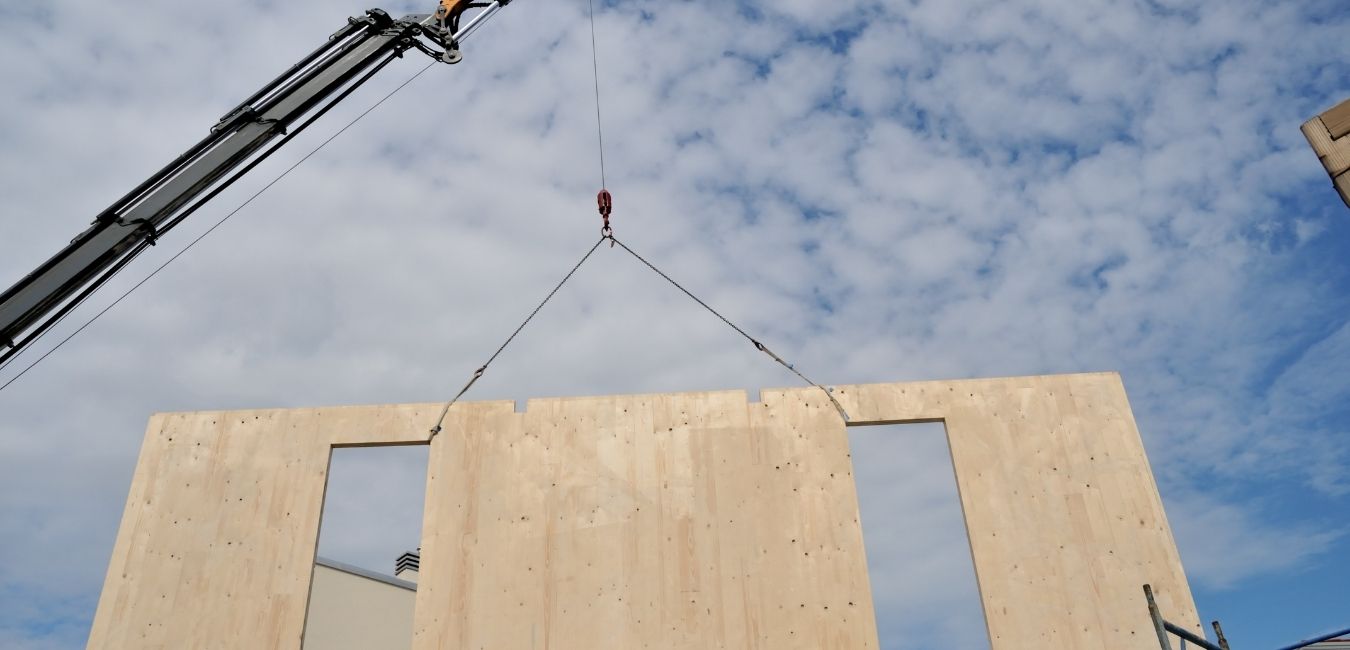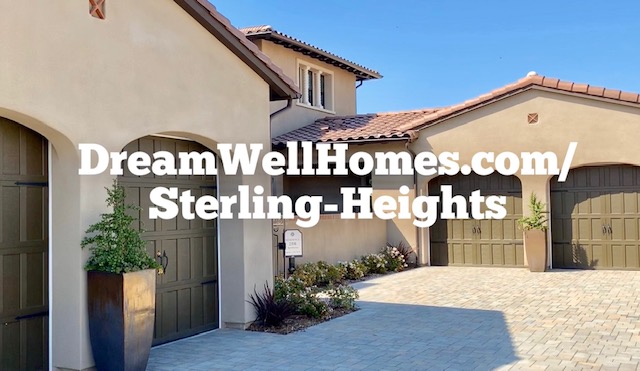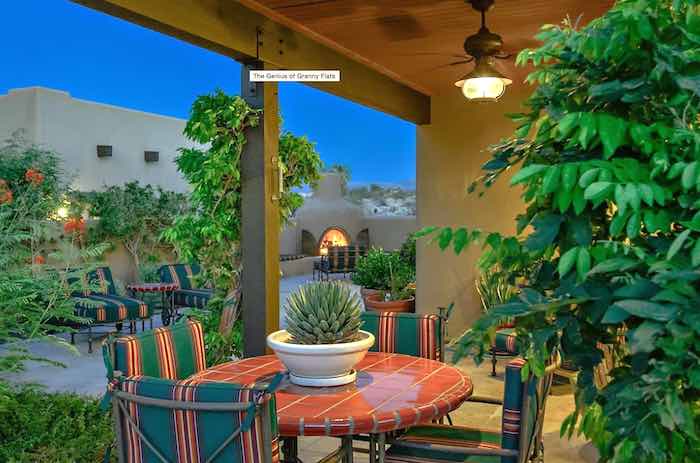
Stairs to No Stairs Home
For many seniors, the decision to move out of the family home to one that suits their lifestyle better and will allow them to age safely in-place, is an easy one. The current family home may be two stories and the steps from the second floor are a serious concern for latter years when balance and coordination begin to ebb. These safety concerns usually go much deeper than just stairs and steps, though.
Shopping for an aging friendly home
However, once the shopping begins for the aging friendly replacement home, the decision suddenly becomes more difficult, due to the availability of homes that match the senior’s taste.
Much of the nation’s inventory of 55+ or senior housing was built in the 1970’s and 1980’s. Many Baby Boomers are used to newer, possibly more upgraded homes, and moving into an older home in need of remodeling isn’t what they had envisioned – they had better things planned for their retirement years.
Questions arise as to the cost effectiveness of sinking remodeling dollars into a home just purchased – especially an older home. Homebuyers, regardless of age, find it more agreeable to invest in upgrades into a new home, rather than into an older one.
An often overlooked fact is that during the course of remodeling an older home, additional deficiencies or safety concerns are revealed, requiring supplementary, unplanned funds to correct. A homeowner may feel like they’ve acquired a money pit.
So time and money often derail what would be a wise move for an older person, they likely end up in a home that still doesn’t suit their needs, and the serious compromise to their heath and safety remains. A compromise that has potentially huge hidden costs, once translated to healthcare procedures and treatments.
Buying a pull-out for the land to replace with a new prefab home
One option that is available to these senior buyers is to purchase an older mobile or manufactured home that has exceeded its useful life (typically called a ‘pull-out’), remove it from the lot and replace it with a new modular home or prefabricated home. Here, the value of the property lies in the land, not in the older obsolete home.
Prefab homes or Modular homes are built in a factory, delivered on trucks and set into place on permanent foundations by cranes, ready for final assembly and finishing.
Please note that mobile or manufactured homes built before 1977 can be more difficult to finance due to safety concerns regarding the materials used in the electrical wiring systems during that era. If you intend to purchase a ‘pull-out’ home that was manufactured pre-1977, communicate this clearly with your lender.
New Prefab homes or modular homes will already have many of the desired aesthetic and safety upgrades incorporated into them. Careful planning and design with the manufacturer will allow the remaining necessary upgrades to be included in the new home before moving in.
Prefab homes or Modular homes don’t necessarily need to be restricted to designated manufactured, or age-specific home parks. This rapidly growing trend even has a name within the building industry.
Some use Prefab homes as ADUs (accessory dwelling units) to be placed on an existing property.
Prefab homes as Accessory Dwelling Units
Depending on local zoning ordinances, some families are opting to add these homes to their existing family lots, creating a multi-generational lifestyle. The adult children live in the main house, while the parents live in the new modular home on the shared lot. This can have many benefits as far as providing quality, cost effective care for the parents, while also encouraging interaction with children and grandkids.
Exterior steps and ramps can be eliminated by preparing the homesite with a gradual incline towards the entry doors. This provides excellent water management, keeping it away from the foundation and forgoes the need for unsightly ramps. Other trip hazards and accessibility issues can also be eliminated during the design and site preparation phases.
Because these modular homes arrive at the homesite mostly finished, the remaining work to make the house habitable goes very quickly. This allows the homeowners to move in and immediately begin living their later years as they envisioned during the initial planning phases of the project, without the added stresses of upgrading an older home.
There will be other costs associated with this type of move to consider. These additional costs might include, the removal and disposal of the original ‘pull-out’ home, homesite preparations, utility hook up fees and local permitting fees, etc. . .
A general rule of thumb to calculate these fees would be to estimate the cost of the new modular home that you would like to purchase, and then double it to include the additional costs mentioned above. Then add this figure to the cost of the lot and original ‘pull-out’ home. The sum of which should get you close for preliminary budget planning.
As a buyer moves from preliminary planning to a more focused action forward, these costs should all be confirmed with local municipal offices and contractors, as they can vary greatly in different regions of the country.
Prefab Home Builder Choices
There are many manufactured or modular home builder options to choose from. Some offer more modern-style architecture with clean lines, while others offer more traditional-style home looks.
Examples of prefab homes companies in California
Bluhomes – Prefab homes recently acquired by Dvele
Dvele – Luxury prefab homes company with headquarters in San Diego
Mighty Buildings – 3D printed modular/ prefab homes currently focused on the California market
Plant Prefab – Prefab homes with factory located in San Bernardino (Rialto, CA)
S2A Modular Homes – Luxury and Sustainable Green Homes
Stillwater Dwelllings – High-end modern homes
Additional Reading Materials on Prefab Homes/ Manufactured Homes
Factory-Built Housing Handbook for City and County Building Departments – December 2007
Source: California Department of Housing and Community Development (HCD). This handbook on factory-built housing (FBH) was prepared and made available to the public by the HCD, Division of Codes and Standards. This publication is intended to provide information to assist local building officials and the public in their understanding of the manufacture, assembly, installation, post-installation alterations, and code enforcement of factory- built homes and factory-built housing components.
Search San Diego County Homes with For Sale with Granny Flats, Accessory Dwelling Units (ADUs), Two Homes on 1 Lot, Attached Guest House or Detached Guest House| Sign Up For Property Email Alerts for Homes with a Second Unit, Guest House, Mother- in Law Suite Here. Also check out our blog article on new California Laws pertaining to building new and permitting and legalizing existing second dwelling units, accessory dwelling unit, etc. here.
Sign up for homes for sale notifications here
- North County San Diego homes with casita, accessory dwelling unit (ADU), granny flat, or houses with guest house
- East County San Diego homes with casita, accessory dwelling unit (ADU), casita, granny flat, or houseswith guest house
- South County San Diego homes with casita, accessory dwelling unit (ADU), casita, granny flat, or houses with guest house
- Metro San Diego homes with casita, accessory dwelling unit (ADU), casita, granny flat, houses with guest house
- All San Diego County homes with casita, accessory dwelling unit (ADU), casita, granny flat, or houses with guest house
- Nearby Orange County homes with casita, accessory dwelling unit (ADU), casita, granny flat, or houses with guest house
- Please Be Sure to Sign Up Here to Receive Property Email Alerts or Please Call/text DreamWell Homes Realty at 760-734-8072
Check out Manufactured Homes For Sale in San Diego County Beach Communities below
As you look into these listings, check out the older ones that could be pulled out, purchased for the value of the land, and replaced with a brand new home.
In general the listings without a monthly homeowner association (HOA) fee is likely a space rent home/ or land is leased. The ones that show a monthly HOA fee is likely a land owned home, however, please be sure to verify all information with the HOA or the land property manager directly.



